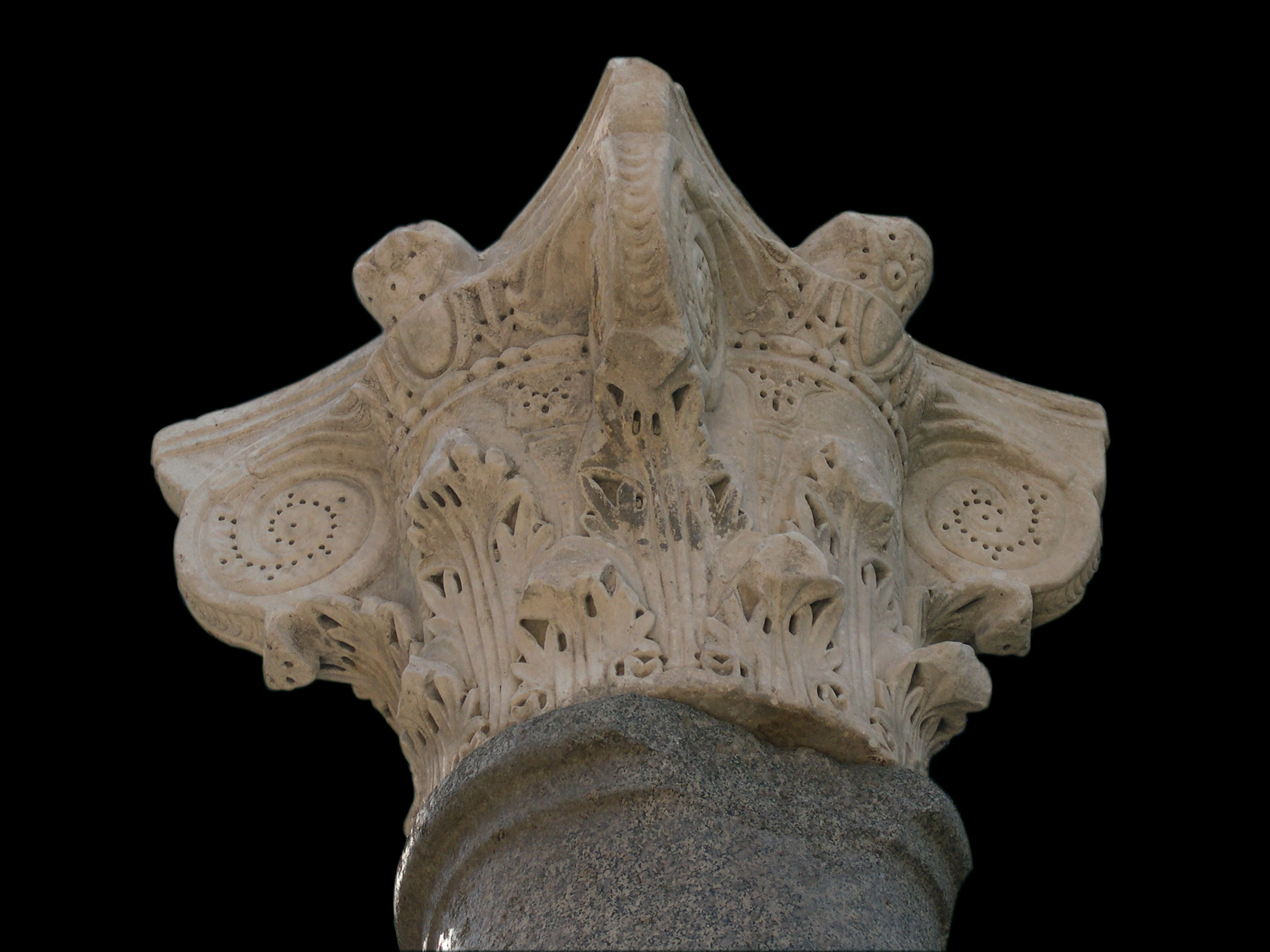White marble H. 54 cm; lower diam. approx. 40 cm; abacus’ side: 60 x 50 cm First half of the III century AD
Composite column capital
Fully preserved Composite column capital, characterized by redundant decoration of eastern origin. The kalathos (h. with rim 38 cm) is dressed with two crown of eight acanthus leaves that show five lobes of elongated, well-outlined and not overlapped points, arranged in a wide and open pattern. On the first crown (h. 17 cm) the large midrib is divided in three by means of four, slightly curved, incised lines; the summit of the leaves are chipped; the voids separating the lobes are drop-shaped. At either corner, the leaves of the second crown (h. 32,5 cm) bend with a flat turnover that supports the underside of the volute. Amidst the second crown foliage stem the cauliculi with plain shaft and double rim (one at either end), from which emerges a calyx of acanthus leaves that reaches the plain abacus’ margin. Such decorative feature, replacing the canonical stems bearing rosettes, is most probably of eastern origin. There is a patent use of the drill in both the calyx leaves and channel of the volutes, which confers a bold and rather schematic outlining effect. In the Ionic section, the astragal (h. 2,2 cm) is carved with elongated oval beads with rounded extremities, alternated with pairs of disc-shaped reels. The Ionic kyma on the echinus (h. 7 cm) shows a large and plain central egg, which is well outlined yet rather flat, cut straight over the upper margin and rounded at the bottom; the casings have a groove in the middle and a concave section. The darts are large, again well outlined and have the summit detached from the casings, thus furnishing an important dating element. The lateral half-palmettes are plain, schematically rendered and formed by three flat lobes ending with a hook-like tip. The volutes’ channel (diam. volutes 20 cm) is covered by a schematic and unfinished vegetal scroll that coils into the spiral with a series of small drill holes and ends near the plain eye of the volute, the latter being marked by a single central drill-hole. The centre of either of the four, highly concave, abacus’ sides (h. 4,5 cm) is taken up by a rosette, devoid of its stem and carved in a very simplified manner over a strongly bulging oval lobe, with six long petals and a central button marked by a single drill-hole. Considering the stylistic characteristics of the foliage with two well-outlined and not flattened crowns, the somewhat schematic handling of the Ionic kyma, of the astragal as well as of the half-palmettes, and most of all the simplified treatment of some of its features, this Composite capital can be dated to the first half of the III century ad.







